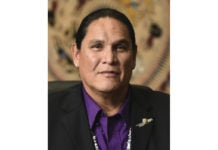by Andrew Cardno
In today’s rapidly evolving gaming landscape, tribal casinos are increasingly diversifying revenue streams, incorporating sports betting, online gaming, and other innovative offerings alongside traditional brick-and-mortar operations. As a marketer, you face unique challenges in navigating this diversified revenue environment. How do you effectively market to varied demographics and new markets, seamlessly integrate different gaming platforms, and measure customer engagement and value across both physical and digital spaces?
As you navigate the complexities of marketing in a diversified revenue environment, it’s essential to be innovative and develop strategies that engage different demographics, integrate online and offline operations, evaluate total customer worth, and measure customer frequency across platforms. By leveraging an integrated customer view, you can gain valuable insights into customer behaviors and preferences, allowing you to tailor your marketing efforts for maximum impact that benefits both your tribal resort and the customers.
Leveraging Sports Betting
The integration of sports betting into tribal casino offerings represents a significant growth opportunity to diversify revenue and attract new customers. With the recent Supreme Court position allowing tribes to offer sports betting, the marketing landscape is evolving rapidly. The real-time nature of sports betting presents exciting opportunities for dynamic marketing and customer engagement. By understanding the unique characteristics of your sports betting audience and developing targeted marketing strategies, your tribal casino can more effectively capitalize on these opportunities for growth to stay competitive in your ever-changing industry.
Sports betting attracts a different demographic compared to traditional casino gaming. Sports bettors tend to be younger, tech-savvy, and highly engaged in online activities. Understanding the preferences and behaviors of this audience is crucial for effective marketing as these insights can inform how you target and engage this audience online. For instance, recent data indicates that 60% of sports bettors are aged 18-34 and prefer mobile platforms for placing bets.
Engaging Different Age Groups
Tailoring your marketing efforts to the diverse demographics in your customer database is crucial for success. One of the most significant challenges you face in a diversified revenue environment is engaging different age groups. Traditional casino resort frequenters driving your tribal resort’s gaming revenue are typically older, while younger generations are more attracted to sports betting and online gaming. This age disparity requires tailored marketing strategies that can effectively engage both groups.
It’s essential to understand the preferences and behaviors of different age groups. Older patrons often value the social aspect of visiting a brick-and-mortar casino – enjoying the lively atmosphere, dining options, and entertainment. Younger audiences, on the other hand, are often drawn to the convenience and excitement of sports betting and online gaming, seeking quick access and interactive experiences.
A recent study found that 70% of millennials prefer online gaming for its convenience, while 65% of baby boomers enjoy the social interactions at land-based casino resorts. Studies have also shown that as people grow older, their preferences continue to change towards a traditional gaming experience. However, many patrons preferring to enjoy the convenience of online gaming and sports betting, for example, will still spend money at your tribal resort, whether it be for occasional gaming trips or non-gaming trips, such as visiting your F&B venues, going to events, retail, or for any of the wide array of entertainment offerings prevalent in today’s modern resorts. This overlap necessitates a cohesive marketing strategy that can address both segments without diluting the brand message, and a unified customer database will help support these initiatives.
Integrating Online Gaming and Brick-and-Mortar Operations
One of the primary challenges in this diversified environment is managing and integrating your customer view. Despite the differences in your online and brick-and-mortar customer profiles, seamless integration of online gaming and brick-and-mortar tooling is essential. This integration not only enhances the customer experience, but also provides valuable data for more effective marketing and decision-making.
Creating a Unified Customer Experience
To create a unified customer experience, ensure that your tribal resort’s branding, messaging, and promotions are consistent across all platforms. Whether a patron is visiting your land-based casino resort or accessing your online gaming platform, they should encounter a cohesive and familiar brand experience. This consistency builds trust and builds your brand value.
Consider implementing a single customer loyalty program that spans both online and offline activities. This approach allows patrons to accumulate and redeem rewards regardless of how they choose to engage with your resort. For example, a patron who places a sports wager can earn points that can be redeemed for free play or dining credits at your physical casino. By providing a seamless and integrated loyalty program, you encourage cross-platform engagement and foster greater customer loyalty.
Leveraging Technology for Integration
Technology plays a crucial role in integrating online gaming and brick-and-mortar operations. Invest in robust customer relationship management (CRM) systems and data analytics tools that can aggregate and analyze data from multiple sources. These systems enable you to gain a holistic view of your customers, tracking their preferences, behaviors, and interactions across all touchpoints to achieve a 360-degree view of your patrons across the enterprise.
For example, if a patron frequently participates in online sports betting and also visits your physical casino resort, your centralized system should capture and consolidate this information to provide your tribal resort operators with actionable data. Then, you can use this data to personalize marketing messages, recommend relevant promotions, and enhance the overall customer experience.
Addressing Data Challenges and Tribal Data Sovereignty
Integrating customer information from diverse sources can be challenging, as the formats and structures of online and offline data differ completely. To overcome these challenges, work closely with your tribal resort’s IT and data analytics teams and third-party technology partners to develop standardized data protocols and integration processes – integration is the key. Ensure that your data platforms are capable of handling large volumes of data and can provide real-time insights for timely decision-making. While building a centralized system, consider the fundamental requirement to house the systems on tribal land to maximize tribal data sovereignty.
Evaluating Overall Customer Worth
One of the critical aspects of this integrated marketing approach is accurately evaluating customer worth across different gaming activities. For instance, a patron who is a high-value sports bettor but a low-value table games player should still be considered a valuable customer. This requires a nuanced understanding of customer behavior and tailored offers that resonate with their preferences.
In a diversified revenue environment, evaluating the overall worth of your customers becomes more complex. Traditional metrics, such as the value of on-premises gaming spending, are no longer sufficient. You need to consider the total value generated by each customer across all platforms and touchpoints of your tribal resort.
Calculating Total Customer Value
Total customer value encompasses both direct and indirect contributions. Direct contributions include spending on gaming, dining, entertainment, and other services at your land-based casino resort. Indirect contributions, on the other hand, include online gaming activities, sports betting, and participation in loyalty programs.
To calculate total customer value, aggregate data from all sources and assign appropriate weights to different types of contributions. For example, a patron who spends $100 on your tribal resort gaming floor and $50 on online sports betting should be recognized for their total contribution of $150 to your tribal enterprise. Additionally, consider the frequency and duration of their interactions – repeat customers and long-term loyalty are valuable indicators of overall worth.
Segmenting Customers Based on Value
Once you have a comprehensive understanding of total customer value, segment your customers into different tiers based on their contributions. High-value customers, or VIPs, should receive special attention and personalized offers to enhance their loyalty and satisfaction. Mid-tier customers can be nurtured with targeted promotions and incentives to encourage increased engagement, while low-value customers can be incentivized to participate more frequently.
Leveraging Data for Insights
Data analytics is instrumental in evaluating customer worth and identifying trends and patterns. Use advanced analytics tools to gain insights into customer behaviors, preferences, and spending patterns. This information can inform your tribal resort’s marketing strategies, allowing you to tailor offers and promotions to different customer segments effectively.
For example, if data shows that a particular group of customers frequently participates in both online gaming and land-based-casino activities, you can create cross-platform promotions that encourage further engagement. By leveraging actionable data-driven insights, you can optimize your marketing efforts and maximize the overall value of your customer database.
Embracing a New Era of Tribal Gaming
Marketing in a diversified revenue environment requires a holistic approach that integrates data, customizes offers, and leverages both online and offline channels. As new innovations and opportunities to diversify revenue in the casino resort industry continue emerging, adopting these strategies will be crucial in maintaining a competitive advantage and fostering customer loyalty. By understanding and addressing the unique challenges of this new landscape, your tribal resort can effectively market to a broader audience and maximize revenue potential.
In this ever-evolving industry, your ability to adapt and innovate is key. As you continue to refine your marketing strategies, stay attuned to the changing preferences of your patrons and leverage the power of technology to create a seamless and engaging customer experience. With careful planning and strategic action, your tribal resort can thrive in this diversified revenue environment. Even more importantly, your ability to remain agile during the unpredictable yet inevitable changes that continue emerging in the casino resort industry will help secure a prosperous future for your tribal resort.
Andrew Cardno is Co-Founder and Chief Technology Officer of Quick Custom Intelligence (QCI). He can be reached by calling (858) 299-5715 or email [email protected].













































